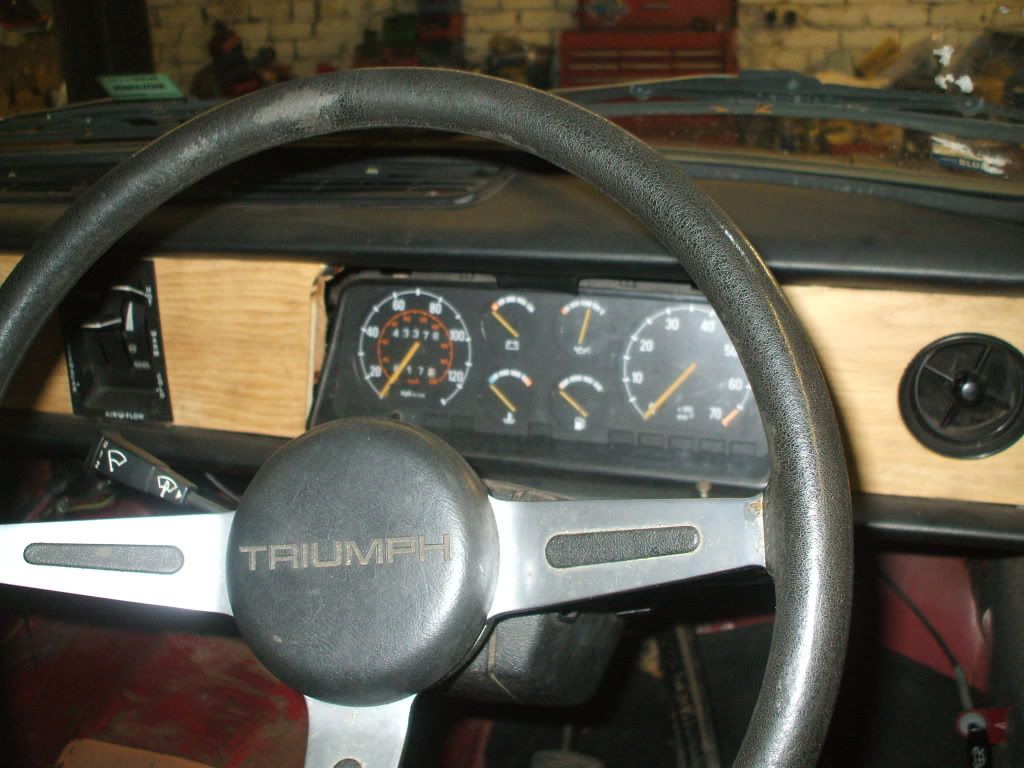For the past 20~25 years, I have contemplated the possibility of upgrading my 1974 Triumph Toledo 1300, with dual-circuit brakes, for the purpose of increased safety margin, in the event of hydraulic brake-system failure. I’ve never suffered complete brake failure, but I’ve known a few people who have and I don’t relish the prospect!
With this in mind, I had at some time during the late-1980s or early-1990s, salvaged the dual-circuit hydraulic-brake master cylinder, differential-pressure-sensing unit (PDWA!?!) and dashboard warning light, from a late-model Triumph Dolomite 1300 (1979/80 | V-registration | Chassis No. TWAL A1 AT 100038); equipped with a single SU carburettor.
Having no workshop manual, containing details of Triumph Dolomite (especially late-model!) braking systems, I took the precaution of drawing a sketch of the brake-pipe connections to the dual-circuit hydraulic-brake master cylinder and the differential-pressure-sensing unit (PDWA!?!). However, I was unable to determine whether the configuration of hydraulic pipework and connections, otherwise differed from those of the single-circuit hydraulic braking system. I also failed to note the exact position of the differential-pressure-sensing unit (PDWA!?!), which might possibly be identical to the four-way union connector, used for the single-circuit braking system!?!
I also noted that three different sizes of male brake union are used, having three different fine & course thread sizes, but only two hexagonal “bolt-head” sizes. What are these thread sizes? Are some metric, Imperial UNF, UNC or otherwise?
The smaller hexagonal “bolt-head”, appears to be either 7/16 inch AF (i.e. 11•11 mm) or 11 mm AF, on which both my Imperial and metric brake-pipe spanners seem to be a snug fit. The larger hexagonal “bolt-head”, appears to be of 13 mm AF, on which my ordinary 13 mm AF ring-spanner & socket will fit, but neither my 1/2 inch AF (i.e. 12•70 mm) sized brake-pipe spanner, ordinary ring-spanner or socket will fit. What other sizes of brake-pipe spanner exist?
My present set of brake-spanners are as follows:
Williams Superslim UNIMIL110 – hexagonal-section 10 mm & 11 mm AF
Williams Superslim UNI78 – hexagonal-section 7/16 inch & 1/2 inch AF
Williams Superslim ADJ45 – square-section 1/4 inch & 5/16 inch AF
Being unfamiliar with the three different sizes of associated brake-pipe unions, I also salvaged these for reference purposes, and as a convenient means of sealing the units. Once I got the units home from the car dismantlers, they were disassembled, cleaned (externally & internally – using isopropanol; otherwise known as propan-1-ol or propyl alcohol), lubricated internally with Automec silicone brake fluid and reassembled, before storing them away for future use.
Noting that the dual-circuit hydraulic-brake master cylinder was much longer than my Toledo’s existing single-circuit hydraulic-brake master cylinder, which would preclude retention of my Toledo’s existing air-filter housing, I also salvaged the very different looking air-filter housing, from the Triumph Dolomite 1300. After refurbishment, I then retro-fitted it to the Toledo during its scheduled 84,000 mile service (84,069 miles | 6th July 1991), together with a new Wipac AP34 (equivalent to Unipart GFE1005) air-filter element. These air-filter housings & associated air-filter elements, are also used on some Morris Marina 13/1800s.
http://www.rimmerbros.co.uk/Item--i-12G3590
http://www.rimmerbros.co.uk/Item--i-GFE1005
http://shop.aseriesspares.co.uk/shop/re ... ter-round/
Several years later, in exchange for a modest donation to the Firemen’s Benevolent Fund, I took the opportunity to salvage various parts from a late-model Triumph Dolomite 1500 HL, at my local fire station (opposite my home), which they had used for practising rescue techniques. This included an additional dual-circuit hydraulic-brake master cylinder and differential-pressure-sensing unit (PDWA!?!), plus the associated larger-girth vacuum brake servo unit, which I had been unable to salvage several years earlier, from the late-model Triumph Dolomite 1300.
My Toledo has stood unused (SORN declared annually) since mid-1999 (i.e. 16+ years), but circumstances have changed, and it is likely that I will need to have use of my own daily-driver car in the future, so I’ve embarked on a major programme of refurbishment and rejuvenation, which will inevitably involve disassembling and overhauling the entire hydraulic braking system. Hence, this would be a golden opportunity to upgrade the system to dual-circuit, whilst the other work is being done; including replacement of all the metal pipework.
It had been noted in the mid-to-late-1990s, during servicing and annual MOT inspections, that some of the metal brake pipes in exposed positions, were beginning to show signs of superficial external rusting and that I might need to replace them in the foreseeable future. Since then, the rusting has become more extensive, so I shall replace all of the steel pipework with Kunifer-10 pipework (an extremely corrosion-resistant cupro-nickel alloy, comprising 90% copper & 10% nickel, that should outlast the life of the vehicle | became standard a few decades ago, on Swedish built vehicles!), as I did during the winter of 1988/89, when I refurbished & upgraded the dual-circuit hydraulic braking system of my 1973 VW “1600” Type 2. I shall similarly be using DOT 5 Automec silicone brake fluid.
Home Forums > Help and Assistance > Bay Tech Clinic > Steering, Brakes & Suspension > Retro-fitting remote-acting brake servos, Kunifer-10 pipework & silicone brake fluid
http://forums.kombiclub.com/threads/ret ... uid.22693/



